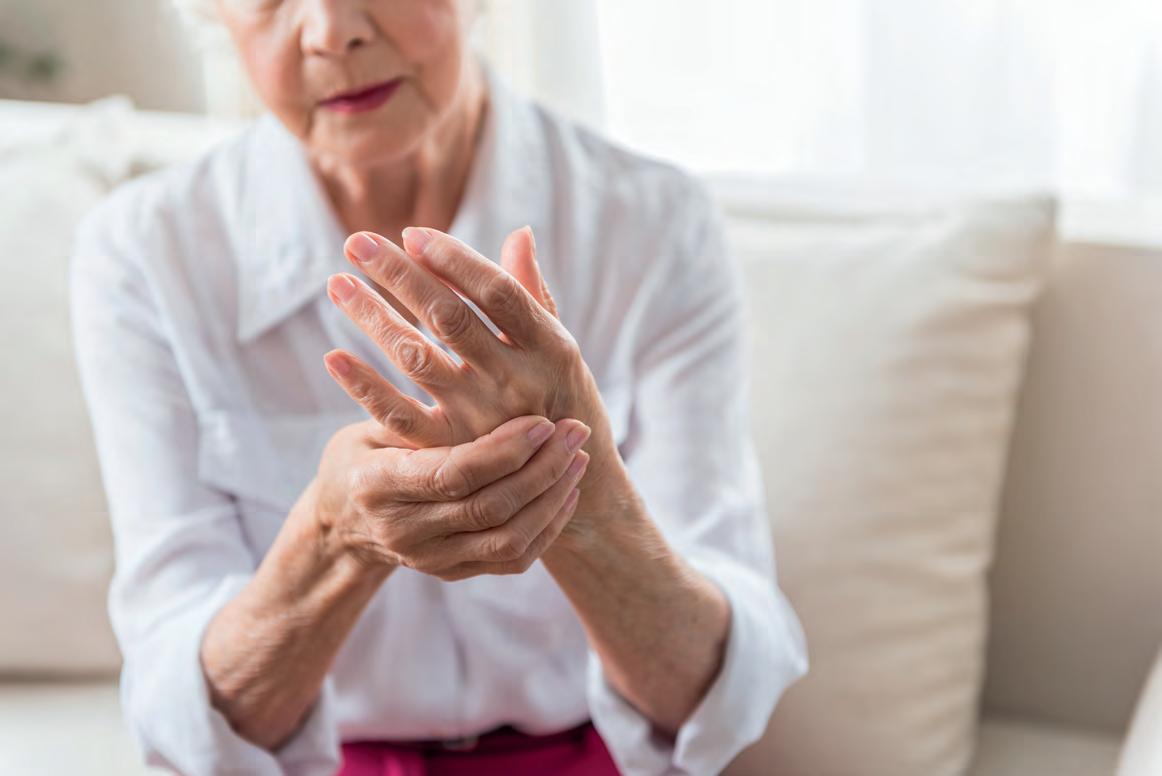
2 minute read
Managing Arthritis Pain
Dr. Humeira Badsha The Middle East Arthritis Foundation reveals that around 20 percent of the UAE population is affected by some form of arthritis, but often diagnosed too late. Dr. Humeira Badsha - Consultant Rheumatologist and Board Member at Middle East Arthritis Foundation (MEAF) reveals that the activities an individual partakes in can have a major impact on their joints and the degree of arthritis pain they experience.
PHYSICAL ACTIVITY
Advertisement
Physical exercise such as mobility and yoga, to name a few, is essential in relieving joint pain and stiffness as it helps with flexibility, strength, and endurance, says Dr. Badsha. She elaborates, “The amount and form of exercise recommended for each individual will vary depending on: which joints are affected, the amount of inflammation, joint stability, and whether joint replacements are already in place.”
POTENTIAL EXERCISES
Dr. Badsha advises each individual should have a customized exercise plan by consulting the right expert. This will better fulfill the medical needs of each patient because the type, intensity and age of each individual varies. “A few types of potential exercises include dance, classified as range of-motion exercise, help maintain normal joint movement and relieve stiffness,” she says, this type of exercise
helps maintain or increase flexibility. Also, moderate weight training (under professional supervision) or strengthening exercises help maintain or increase muscle strength. In turn, these strong muscles will aid in supporting and protecting joints affected by arthritis. Aerobic or endurance exercise such as riding a bicycle improves cardiovascular fitness, helps with weight control and improves overall function, she explains. “Low-impact exercise such as yoga, can be safely practiced by any arthritis patient and helps in keeping the joints flexible, increasing the flow of synovial fluid to the joints and improving the range of motion. Furthermore, yoga poses strengthen the muscles, thus providing better support to the joints.” CHANGE IN ROUTINES

Most patients are concerned with the ways to stay active within the pandemic as their lives and routines have changed drastically. Dr. Badsha helps them adapt to their exercise routines, set smart goals and develop a reward system to keep them motivated, so that they are able to be consistent with their fitness habits. “The work from home lifestyle can be stationary for hours on end, hence, this can pose health risks, especially to those suffering from arthritis,” she explains. “It is advised to take constant short-breaks from the table and do some light-intensity activities, such as walking around the house and taking afternoon strolls, both which are healthy activities.” A HOLISTIC APPROACH
In addition to physical wellbeing, arthritis patients also need to pay attention to their mental well-being and diet, she tells. “Any form of physical exercise promotes the release of feel-good hormones such as endorphins, in our body, thus reducing the sensation of pain,” she says, and while there is no special diet or ‘miracle food’ to cure arthritis, a well-balanced diet without artificial colors or additives may help ease the symptoms of arthritis. Dr. Badsha elaborates, “A Mediterranean-style diet which includes fish, pulses, nuts, olive oil and plenty of fruit and vegetables is known to fight inflammation, strengthen bones and boost the immune system. Ensure a sufficient intake of calcium. Practice safe sun exposure for vitamin D absorption. Turmeric is also an ingredient that has antiinflammatory properties as believed by scientists.” H Visit: www.arthritis.ae










